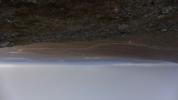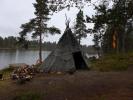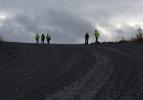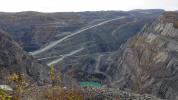Blog posts
Posts
A Hackers Manifesto, verze 4.0, kapitola 4.
By samotar, 10 January 2023
Alfred ve dvoře čili Poznámka k pražské hetero-utopii
By samotar, 10 November 2022
Trnovou korunou a tankem do srdíčka
By samotar, 2 July 2022
Hakim Bey - Informační válka
By samotar, 26 March 2022
Jean-Pierre Dupuy: Do we shape technologies, or do they shape us?
By samotar, 6 March 2022
Václav Cílek: Záhada zpívající houby
By samotar, 15 February 2022
Guy Debord - Teorie dérive
By samotar, 21 January 2022
Jack Burnham – Systémová estetika
By samotar, 19 November 2021
Poznámka pod čarou k výstavě Handa Gote: Věc, nástroj, čas, fetiš, hygiena, tabu
By samotar, 13 July 2021
Rána po ránech
By samotar, 23 May 2021
Na dohled od bronzového jezdce
By samotar, 4 March 2021
Z archivu:Mlha - ticho - temnota a bílé díry
By samotar, 7 October 2020
Zarchivu: Hůlna-kejdže
By samotar, 7 September 2020
Center for Land Use Interpretation
By samotar, 18 June 2020
Dawn Chorus Day - zvuky za svítání
By samotar, 30 April 2020
Z archivu: Bílé Břehy 2012 a Liběchov 2011
By , 3 April 2020
Z archivu: Krzysztof Wodiczko v DOXU
By samotar, 26 March 2020
GARY SNYDER: WRITERS AND THE WAR AGAINST NATURE
By samotar, 20 March 2020
Podoby domova: hnízda, nory, doupata, pavučiny, domestikace a ekologie
By samotar, 17 March 2020
Michel Serres: Transdisciplinarity as Relative Exteriority
By samotar, 5 November 2019
Pavel Ctibor: Sahat zakázáno
By samotar, 22 September 2019
Emmanuel Lévinas: HEIDEGGER, GAGARIN A MY
By samotar, 19 September 2019
Atmosférické poruchy / Atmospheric Disturbances - Ustí nad Labem
By samotar, 13 September 2019
Erkka Laininen: A Radical Vision of the Future School
By samotar, 10 August 2019
Anton Pannekoek: The Destruction of Nature (1909)
By samotar, 21 July 2019
Co padá shůry - světlo, pelyněk, oheň a šrot
By samotar, 30 December 2018
2000 slov v čase klimatických změn - manifest
By samotar, 2 November 2018
Vladimír Úlehla, sucho, geoinženýrství, endokrinologie, ekologie a Josef Charvát
By samotář, 22 September 2018
Lukáš Likavčan: Thermodynamics of Necrocracy - SUVs, entropy, and contingency management
By samotar, 20 July 2018
Tajemství spolupráce: Miloš Šejn
By samotar, 27 June 2018
Invisible Images (Your Pictures Are Looking at You) Trevor Paglen
By samotar, 2 June 2018
KŘEST KNIHY KRAJINA V POZORU: THE LANDSCAPE IN FOCUS.
By samotar, 18 May 2018
Případ zchudlé planety:Vojtěch Kotecký
By samotar, 22 April 2018
Rozhovor na Vltavě: Jak umění reaguje na dobu antropocénu?
By samotar, 10 March 2018
Skolt Sámi Path to Climate Change Resilience
By samotar, 10 December 2017
Brian Holmes: Driving the Golden Spike - The Aesthetics of Anthropocene Public Space
By samotar, 22 November 2017
Ohlédnutí/Revisited Soundworm Gathering
By samotař, 9 October 2017
Kleté krajiny
By samotar, 7 October 2017
Kinterova Jednotka a postnatura
By samotař, 15 September 2017
Ruiny-Černý trojúhelník a Koudelkův pohyb v saturnských kruzích
By samotar, 13 July 2017
Upsych316a Universal Psychiatric Church
By Samotar, 6 July 2017
Miloš Vojtěchovský: Krátká rozprava o místě z roku 1994
By milos, 31 May 2017
Za teorií poznání (radostný nekrolog), Bohuslav Blažek
By miloš vojtěchovský, 9 April 2017
On the Transmutation of Species
By miloš vojtěchovský, 27 March 2017
Gustav Metzger: Poznámky ke krizi v technologickém umění
By samotař, 2 March 2017
CYBERPOSITIVE, Sadie Plant a Nick Land
By samotař, 2 March 2017
Ivan Illich: Ticho jako obecní statek
By samotař, 18 February 2017
Dialog o primitivismu – Lawrence Jarach a John Zerzan
By samotar, 29 December 2016
Thomas Berry:Ekozoická éra
By samotař, 8 December 2016
Jason W. Moore: Name the System! Anthropocenes & the Capitalocene Alternative
By miloš vojtěchovský, 24 November 2016
Michel Serres: Revisiting The Natural Contract
By samotař, 11 November 2016
Best a Basta době uhelné
By samotař, 31 October 2016
Epifanie, krajina a poslední člověk/Epiphany, Landscape and Last Man
By Samotar, 20 October 2016
Doba kamenná - (Ein, Eisen, Wittgen, Frankenstein), doba plastová a temná mineralogie
By samotař, 4 October 2016
Hledání hlasu řeky Bíliny
By samotař, 23 September 2016
Harrisons: A MANIFESTO FOR THE 21ST CENTURY
By , 19 September 2016
T.J. Demos: Anthropocene, Capitalocene, Gynocene: The Many Names of Resistance
By , 11 September 2016
Bratrstvo
By samotař, 1 September 2016
Neptunismus a plutonismus na vyhaslé sopce Bořeň
By , 14 August 2016
Murray Bookchin: Toward an Ecological Society/ K ekologické společnosti (1974)
By samotař, 31 July 2016
Metafory, endofyzika, manželé Themersonovi a Gordon Pask
By samotař, 15 July 2016
Anima Mundi Revisited
By miloš vojtěchovský, 28 June 2016
Simon A. Levin: The Evolution of Ecology
By samotař, 21 June 2016
Anna Remešová: Je možné představit si změnu?
By samotar, 20 June 2016
Jan Hloušek: Uranové město
By samotař, 31 May 2016
Josef Šmajs: Složí lidstvo zkoušku své racionální dospělosti?
By samotař, 20 May 2016
Manifest The Dark Mountain Project
By Samotar, 3 May 2016
Pokus o popis jednoho zápasu
By samotar, 29 April 2016
Václav Cílek: Antropocén – velké zrychlení světa
By Slawomír Uher, 23 April 2016
Nothing worse or better can happen
By Ewa Jacobsson, 5 April 2016
Real Reason we Can’t Stop Global Warming: Saskia Sassen
By , 18 March 2016
The Political Economy of the Cultural Commons and the Nature of Sustainable Wealth
By samotar, 12 March 2016
Jared Diamond - Easter's End
By , 21 February 2016
Felix Guattari - Three Ecologies (part 1)
By , 19 February 2016
W. H. Auden: Journey to Iceland
By , 9 February 2016
Jussi Parikka: The Earth
By Slawomír Uher, 8 February 2016
Brian Holmes: Extradisciplinary Investigations. Towards a New Critique of Institutions
By Stanislaw, 7 February 2016
Co číhá za humny? neboli revoluce přítomnosti
By Miloš Vojtěchovský, 31 January 2016
Podivuhodný osud polárníka a malíře Julia Payera
By , 23 January 2016
Red Sky: The Eschatology of Trans
By Miloš Vojtěchovský, 19 January 2016
#AKCELERACIONISTICKÝ MANIFEST (14. května 2013)
By samotar, 7 January 2016
The Forgotten Space: Notes for a Film
By , 7 January 2016
Rise and Fall of the Herring Towns:Impacts of Climate and Human Teleconnections
By , 25 December 2015
Hlubinná, temná, světlá i povrchová ekologie světa
By , 22 December 2015
Three short movies: Baroque Duchcov, New Lakes of Mostecko and Lignite Clouds
By Michal Kindernay, 21 December 2015
Lenka Dolanová: Umění mediální ekologie
By , 21 December 2015
Towards an Anti-atlas of Borders
By , 20 December 2015
Pavel Mrkus - KINESIS, instalace Nejsvětější Salvátor
By Miloš Vojtěchovský, 6 December 2015
Tváře/Faces bez hranic/Sans Frontiers
By Miloš Vojtěchovský, 29 November 2015
Josef Šmajs: Ústava Země/A Constitution for the Earth
By Samotar, 28 November 2015
John Jordan: The Work of Art (and Activism) in the Age of the Anthropocene
By Samotar, 23 November 2015
Humoreska: kočky, koulení, hroby a špatná muška prince Josefa Saského
By Samotar, 13 November 2015
Rozhovor:Před věčným nic se katalogy nesčítají
By Samotar, 11 November 2015
Lecture by Dustin Breiting and Vít Bohal on Anthropocene
By Samotar, 8 November 2015
Antropocén a mocné žblunknutí/Anthropocene and the Mighty Plop
By Samotar, 2 November 2015
Rory Rowan:Extinction as Usual?Geo-Social Futures and Left Optimism
By Samotar, 27 October 2015
Pavel Klusák: Budoucnost smutné krajiny/The Future of a Sad Region
By ll, 19 October 2015
Na Zemi vzhůru nohama
By Alena Kotzmannová, 17 October 2015
Upside-down on Earth
By Alena Kotzmannová, 17 October 2015
Thomas Hylland Eriksen: What’s wrong with the Global North and the Global South?
By Samotar, 17 October 2015
Nýey and Borealis: Sonic Topologies by Nicolas Perret & Silvia Ploner
By Samotar, 12 October 2015
Images from Finnmark (Living Through the Landscape)
By Nicholas Norton, 12 October 2015
Bruno Latour: Love Your Monsters, Why We Must Care for Our Technologies As We Do Our Children
By John Dee, 11 October 2015
Temné objekty k obdivu: Edward Burtynsky, Mitch Epstein, Alex Maclean, Liam Young
By Samotar 10 October 2015, 10 October 2015
Czech Radio on Frontiers of Solitude
By Samotar, 10 October 2015
Beyond Time: orka, orka, orka, nečas, nečas, nečas
By Samotar, 10 October 2015
Langewiese and Newt or walking to Dlouhá louka
By Michal Kindernay, 7 October 2015
Notice in the Norwegian newspaper „Altaposten“
By Nicholas Norton, 5 October 2015
Interview with Ivar Smedstad
By Nicholas Norton, 5 October 2015
Iceland Expedition, Part 2
By Julia Martin, 4 October 2015
Closing at the Osek Monastery
By Michal Kindernay, 3 October 2015
Iceland Expedition, Part 1
By Julia Martin, 3 October 2015
Finnmarka a kopce / The Hills of Finnmark
By Vladimír Merta, 2 October 2015
Od kláštera Osek na Selesiovu výšinu, k Lomu, Libkovicům, Hrdlovce a zpět/From The Osek Cloister to Lom and back
By Samotar, 27 September 2015
Sápmelažžat Picnic and the Exploration of the Sami Lands and Culture
By Vladimir, 27 September 2015
Gardens of the Osek Monastery/Zahrady oseckého kláštera
By ll, 27 September 2015
Workshop with Radek Mikuláš/Dílna s Radkem Mikulášem
By Samotářka Dagmar, 26 September 2015
Czech Radio Interview Jan Klápště, Ivan Plicka and mayor of Horní Jiřetín Vladimír Buřt
By ll, 25 September 2015
Bořeň, zvuk a HNP/Bořeň, sound and Gross National Product
By Samotar, 25 September 2015
Já, Doly, Dolly a zemský ráj
By Samotar, 23 September 2015
Up to the Ore Mountains
By Michal, Dagmar a Helena Samotáři , 22 September 2015
Václav Cílek and the Sacred Landscape
By Samotář Michal, 22 September 2015
Picnic at the Ledvice waste pond
By Samotar, 19 September 2015
Above Jezeří Castle
By Samotar, 19 September 2015
Cancerous Land, part 3
By Tamás Sajó, 18 September 2015
Ledvice coal preparation plant
By Dominik Žižka, 18 September 2015
pod hladinou
By Dominik Žižka, 18 September 2015
Cancerous Land, part 2
By Tamás Sajó, 17 September 2015
Cancerous Land, part 1
By Tamás Sajó, 16 September 2015
Offroad trip
By Dominik Žižka, 16 September 2015
Ekologické limity a nutnost jejich prolomení
By Miloš Vojtěchovský, 16 September 2015
Lignite Clouds Sound Workshop: Days I and II
By Samotar, 15 September 2015
Recollection of Jezeří/Eisenberg Arboretum workshop
By Samotar, 14 September 2015
Walk from Mariánské Radčice
By Michal Kindernay, 12 September 2015
Mariánské Radčice and Libkovice
By Samotar, 11 September 2015
Tušimice II and The Vicarage, or the Parsonage at Mariánské Radčice
By Samotar, 10 September 2015
Most - Lake, Fish, algae bloom
By Samotar, 8 September 2015
Monday: Bílina open pit excursion
By Samotar, 7 September 2015
Duchcov II. - past and tomorrow
By Samotar, 6 September 2015
Duchcov II.
By Samotar, 6 September 2015
Arrival at Duchcov I.
By Samotar, 6 September 2015
Poznámka k havárii rypadla KU 300 (K severu 1)
By Samotar, 19 August 2015
Upside-down on Earth
The journey led north. “North” keeps shifting. For residents of Oslo, north is somewhere in the middle of Norway, in Trondheim. For residents of Trondheim it is somewhere in Alta, and in Alta it has shifted even further to the north.
Kautokeino. This is where our expedition starts, although residents of Oslo rarely make it this far. This is the land of the original Sami. Here, the map is turned upside-down. It is a land of reindeer herders and fishermen, with an average of 0.3 residents per square kilometer. When, thanks to a presentation by Ole Johan Gaup, we learned more about their history, culture, and current traditions, I began to see confirmation of how far our contemporary way of life is removed from theirs. Things that have always been natural suddenly strike us as eccentric. Is it cold? Start a fire and cover yourself in reindeer skin. Are you hungry? Kill the oldest reindeer. Feel like a treat? Make yourself some reindeer blood pancakes (we tried some). Want to take your dog for a walk? Go ahead, but be careful that your dog isn’t carried off by an eagle. And so on.
I feel like I’m on a different planet. I am amazed at the local awareness and natural respect for nature, which is something all of us should possess. I learn that reindeer paws are soft and adapted so that when the animals take a step, the weight is spread out and the plants bend only slightly under their weight. Reindeer are also have no front teeth, so that when they chew something they only nibble on it gently with their gums. Nature is loved here, and the dependence on nature is more than clear. And its disturbance through resource extraction which seriously impacts the original environment stands out in even greater contrast. The landscape of abandoned mines in Kautokeino resembles the landscape of another planet on which nobody expects to find life any more.
Cut. We are traveling further north towards one of the last places on our expedition – Kirkenes on the Russian border. In this region, the latest technologies are used to mine iron ore, oil, and natural gas. Every year, the waste products from this wealth of resources – on average, two millions tons of toxic waste – are “inconspicuously” deposited at the bottom of the sea. As a result of this mining, the landscape here is upside-down not only on land, but also beneath the surface of the ocean. A mining pit becomes a mountain, and a mountain of waste is transferred to the bottom of the sea. Contaminated fauna and flora. Why doesn’t anyone stop it? Again, I am amazed at how people can forget their original relationship to nature. Again, I feel like I’m on a different planet, a planet of inverted models of behavior.
Not far from here in Games, an expansive territory not near the Kirkenes airport, the Nor Terminal mining company has decided to start drilling for oil and gas. However, the first exploratory drilling unexpectedly came up with prehistoric stone carvings, and so it had to be stopped. Maybe, in an instinctive act of self-preservation, the planet has begun to defend itself. The exciting question arises: Can prehistoric paintings stop mining? If only art could be used as a defensive weapon.
My plan is to exhibit a series of photographs and video sequences that are directly inspired by this question, by the motif of “inversion/reversing,” and by presenting people’s relationship to the Earth through the eyes of “an extraterrestrial”. The individual shots – close-ups as well as full landscapes – combine to form a mosaic of various places in the north of Norway. They do not make any direct reference to specific locations, instead presenting a general view of the Earth as seen through an inverted hierarchy of values and a reversed polarity of interest. One important aspect when creating the visuals will be the question of time in the sense of duration and temporariness – the landscape is shaped over the long term, and this temporality influences man’s relationship to it. Despite this, other people treat the landscape with so much energy and with such short-sightedness that they seem to be working against time in leaps and bounds.
For me, the expedition’s name “Frontiers of Solitude” took on new meaning after having taken part in it. I found myself on the boundary of a rupture in space-time. The original person remained standing and the landscape all around was shifted in time and in space.
I see the photographic series and video sequence as the ideal medium for capturing this inversion, flowing, and stoppage of time.
Alena Kotzmannová
Alena Kotzmannová
Field Work and Ecology
This expedition through Iceland will lead participants to various locations in the South, East and North of Iceland where the untapped sources of renewable energy – water, steam, and wind – as well as the impacts of hydro- and geothermal power plants on the landscape and on local micro-economies, can be observed.
We will visit the largest rockfill dam in Europe, Kárahnjúkar dam, as well as the aluminium factory for which it was built, and the affected river systems. The construction of Kárahnjúkar dam (2003-07), and the political process leading up to it, have been the subject of extreme controversy in Iceland. Under the current government, plans for more hydroelectric mega-dams are under way. They promote an intensified “harvesting” of the country’s large number of free-running rivers and promise cheap "green" energy – with the aim of attracting investors, multinational corporations, and energy-hungry heavy industry to Iceland.
Participating artists will meet with experts from other disciplines and will be introduced to the ecological, political and socioeconomic aspects of the sites visited. The program intends to feed into a critical and informed debate about case-specific ecological and socioeconomic co-dependencies, and about the means and ends of renewable energy production and energy consumption.
Program
10. Aug: Arrival of artists in Reykjavík/Keflavík Airport
Travel by car to Akureyri
11. Aug: Travel along the north coast to Lake Myvatn, geothermal landscapes of Krafla, through the northeast to Dettifoss nad waterfalls Egilsstadir
12 Aug: Afternoon meeting at Skaftfell Center for Visual Art, talk by Markús Þór Andrésson
13 Aug: Visit to Skálanes Nature and Heritage Centre, Seyðisfjörður
14 Aug: Site visit to Reydarfjördur, tour to Alcoa Aluminium Smelter
15 Aug: Site visit to Kárahnjúkar hydroelectric dam in Eastern Highlands
16 Aug: Site visit to Lake Lagarfljót and Heradsflói Estuary
17 Aug: Return to Seyðisfjörður, evening meeting at Skaftfell Project Space, sharing of visual material, observations, thoughts, open to the public
18 Aug: Travel along south coast to Reykjavík, (Jökulsárlón Ice Lagoon, glacial estuaries, geothermal greenhouses Hveragerði
Accommodation at SÍM (Association of Icelandic Artists)
19 Aug: talk by Andri Snær Magnason, and evening screening of "Dreamland" movie, based on his book Dreamland, discussion on the planned projects and impressions of the participants
20 Aug Departure day from Reykjavik
Participants: Pavel Mrkus, Diana Winklerová, Greg Pope, Ivar Smedstad, Karlotta Blöndal, Finnur Arnar Arnason
Organisation: Julia Martin, Tinna Guðmundsdóttir
Documentation: Lisa Paland
…













